- Events & Programs Home
- Calendar
- Accessibility
- Adults
-
Families & Teens
- Families & Teens Home
- 10x10 Teen Art Expo
- Art on the Rise
- Art Together: Art Making for Families with Children Ages 3–5
- Babies Sing with May Festival Minis
- Boy Scouts / Girl Scouts
- CAM Kids Day
- Family Storytime and Gallery Walk
- Family Studio: Art Making for Families with Children Ages 6–12
- Games in the Galleries
- Members-Only Baby Tours
- Public Baby Tours
- REC Reads
- Rosenthal Education Center (REC)
- Saturday Morning Art Class
- See Play Learn Kits
- Summer Camp
- Teen Fest: Zine and Comic Exchange
- RECreate
- Teachers
- Community Outreach
- Fundraisers
- Plan Your Own Event

- Events & Programs Home
- Calendar
- Accessibility
- Adults
-
Families & Teens
- Families & Teens Home
- 10x10 Teen Art Expo
- Art on the Rise
- Art Together: Art Making for Families with Children Ages 3–5
- Babies Sing with May Festival Minis
- Boy Scouts / Girl Scouts
- CAM Kids Day
- Family Storytime and Gallery Walk
- Family Studio: Art Making for Families with Children Ages 6–12
- Games in the Galleries
- Members-Only Baby Tours
- Public Baby Tours
- REC Reads
- Rosenthal Education Center (REC)
- Saturday Morning Art Class
- See Play Learn Kits
- Summer Camp
- Teen Fest: Zine and Comic Exchange
- RECreate
- Teachers
- Community Outreach
- Fundraisers
- Plan Your Own Event
Blog: CAM Uncovered
Blog: CAM Uncovered
- Home
- Plan Your Visit
- Art
-
Events & Programs
- Events & Programs Home
- Calendar
- Accessibility
- Adults
-
Families & Teens
- Families & Teens Home
- 10x10 Teen Art Expo
- Art on the Rise
- Art Together: Art Making for Families with Children Ages 3–5
- Babies Sing with May Festival Minis
- Boy Scouts / Girl Scouts
- CAM Kids Day
- Family Storytime and Gallery Walk
- Family Studio: Art Making for Families with Children Ages 6–12
- Games in the Galleries
- Members-Only Baby Tours
- Public Baby Tours
- REC Reads
- Rosenthal Education Center (REC)
- Saturday Morning Art Class
- See Play Learn Kits
- Summer Camp
- Teen Fest: Zine and Comic Exchange
- RECreate
- Teachers
- Community Outreach
- Fundraisers
- Plan Your Own Event
- Give & Join
- About
- Tickets
- Calendar
- Exhibitions
- Collections
- Blog
- Shop
25 years of Evenings for Educators
by Mary Claire Angle
3/18/2015
learning & interpretation , education , educators , Evenings for Educators , events & programs , in the classroom , curriculum , lectures , Mary Claire Angle

This year the Cincinnati Art Museum is celebrating its 25th year of Evenings for Educators. For those unfamiliar with Evenings for Educators, it is the art museum’s teacher professional 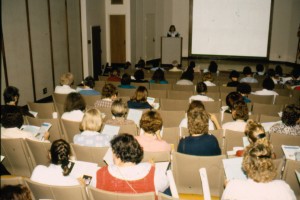 development program that occurs the third Wednesday of every month, September through May, except December. Each month’s session ties into specific areas of our permanent collection, focuses on one of our special exhibitions, and/or explores trending approaches in education. The program’s format includes lectures by guest speakers, such as curators, professors or artists, followed by docent-guided gallery tours or hands-on art-making workshops. With the help of our museum teachers, curricular connections are made as they share interdisciplinary lesson plans inspired by works of art or overarching themes within an exhibition. Furthermore, program attendees leave each session with a take-home folder of educational readings and resources as well as lesson plans. The intent is that Evenings for Educators will inspire teachers with new ideas and strategies for integrating the arts into various disciplines in the classroom.
development program that occurs the third Wednesday of every month, September through May, except December. Each month’s session ties into specific areas of our permanent collection, focuses on one of our special exhibitions, and/or explores trending approaches in education. The program’s format includes lectures by guest speakers, such as curators, professors or artists, followed by docent-guided gallery tours or hands-on art-making workshops. With the help of our museum teachers, curricular connections are made as they share interdisciplinary lesson plans inspired by works of art or overarching themes within an exhibition. Furthermore, program attendees leave each session with a take-home folder of educational readings and resources as well as lesson plans. The intent is that Evenings for Educators will inspire teachers with new ideas and strategies for integrating the arts into various disciplines in the classroom.
In celebrating the 25th year of Evenings for Educators, I would like to reflect upon the beginning years of this program. For insight, I was able to speak with two teachers, Cathy Herring and Linda Hanson, who have been attending Evenings for Educators since the program’s inception in 1989. Both were also museum teachers during the first several years of programming and therefore have provided a wealth of information about how Evenings for Educators, “E4E” for short, has developed over the two plus decades.
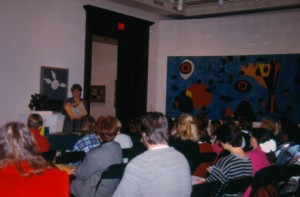 According to Herring, it was former Director of Education, Anne El’Omani who was the force behind launching the E4E series in 1989. Herring states that the program began because El’Omani wanted to give teachers the tools to bring the art museum’s collection into the classroom. The first year of programming included eight sessions with topics such as, “Daily Life and Culture in the Ancient World,” “What is a Masterpiece?,” “Past and Present: The Art of China,” upon others. Hanson comments that teachers from across all disciplines would attend E4E, but the majority were elementary school teachers and parent volunteers from the Picture Lady Program (a volunteer team of educators that would bring art programming into the local school districts). Much like today, all sessions during the first year would include guest lectures by individuals in the education and arts fields and attendees would receive take-home folders with educational resources.
According to Herring, it was former Director of Education, Anne El’Omani who was the force behind launching the E4E series in 1989. Herring states that the program began because El’Omani wanted to give teachers the tools to bring the art museum’s collection into the classroom. The first year of programming included eight sessions with topics such as, “Daily Life and Culture in the Ancient World,” “What is a Masterpiece?,” “Past and Present: The Art of China,” upon others. Hanson comments that teachers from across all disciplines would attend E4E, but the majority were elementary school teachers and parent volunteers from the Picture Lady Program (a volunteer team of educators that would bring art programming into the local school districts). Much like today, all sessions during the first year would include guest lectures by individuals in the education and arts fields and attendees would receive take-home folders with educational resources.
 In the first years of programming, museum teachers played a vital role, as they continue to do today. Herring remembers her experiences as a museum teacher that first year, “On the evening we would have a display at a station, usually in front of the artwork we had picked. There would be multiple projects. We tried to have different things for the different age groups that we taught. Lesson plans always had extensions for math, social studies, music, gym etc… when appropriate. Lesson plans also included historical or factual info on the piece of art and/or artists.” Hanson says that there was much work required in being a museum teacher. The teachers would have planning meetings twice a month; they would research lesson plan ideas and spend time working in their classrooms to get samples of projects to present during the program.
In the first years of programming, museum teachers played a vital role, as they continue to do today. Herring remembers her experiences as a museum teacher that first year, “On the evening we would have a display at a station, usually in front of the artwork we had picked. There would be multiple projects. We tried to have different things for the different age groups that we taught. Lesson plans always had extensions for math, social studies, music, gym etc… when appropriate. Lesson plans also included historical or factual info on the piece of art and/or artists.” Hanson says that there was much work required in being a museum teacher. The teachers would have planning meetings twice a month; they would research lesson plan ideas and spend time working in their classrooms to get samples of projects to present during the program.
Being an E4E museum teacher is similar today, except instead of having collaborative meetings every month, museum teachers work individually as they research and create lesson plans that directly connect with their specific students’ curricular requirements, and then, it is implemented in their classroom.
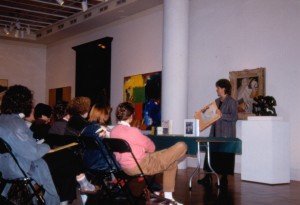 At E4E, each museum teacher is given their own table in front of the work of art on which they are focusing. On these tables they have examples of student work, photographs, the art supplies required for the lesson in addition to the actual lesson plan that teachers can take with them. Museum teachers talk about their experience developing and implementing their lesson plans with program attendees,in addition to how it was received by their students, during the docent-led gallery tour portion of the event.
At E4E, each museum teacher is given their own table in front of the work of art on which they are focusing. On these tables they have examples of student work, photographs, the art supplies required for the lesson in addition to the actual lesson plan that teachers can take with them. Museum teachers talk about their experience developing and implementing their lesson plans with program attendees,in addition to how it was received by their students, during the docent-led gallery tour portion of the event.
Evenings for Educators, while in its 25th year, still holds its relevance season after season as teachers continue to attend to gather new ideas on ways to bring the arts into their classroom and connect creativity to diverse subject areas and various disciplines.
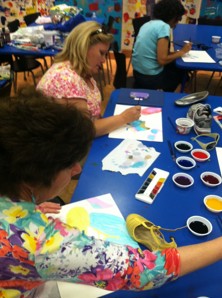 Join us tonight from 4:00-7:00 pm for our March program, An Evening with Illustrator, Will Hillenbrand. Additional Evenings for Educators sessions for the 2014-2015 season include, See It & Make It: A Look at Fashion Designer, Rudi Gernreich on April 15th and the Arts in Education Idea Share in partnership with Greater Cincinnati Alliance for Arts Education (GCAAE) on May 20th. To register to attend call: (513) 721-ARTS or visit us online. I hope to see you at upcoming Evenings for Educators!
Join us tonight from 4:00-7:00 pm for our March program, An Evening with Illustrator, Will Hillenbrand. Additional Evenings for Educators sessions for the 2014-2015 season include, See It & Make It: A Look at Fashion Designer, Rudi Gernreich on April 15th and the Arts in Education Idea Share in partnership with Greater Cincinnati Alliance for Arts Education (GCAAE) on May 20th. To register to attend call: (513) 721-ARTS or visit us online. I hope to see you at upcoming Evenings for Educators!
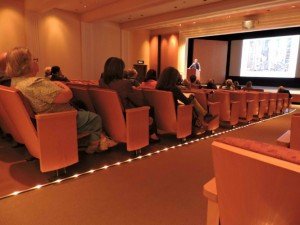 Teachers in attendance receive CEUs (continuing education units) at the end of the season based on the number of sessions they attend. Graduate credit is also available, upon request, through a long-standing partnership with Ashland University.
Teachers in attendance receive CEUs (continuing education units) at the end of the season based on the number of sessions they attend. Graduate credit is also available, upon request, through a long-standing partnership with Ashland University.
Thank you to Cathy Herring and Linda Hanson for taking the time to share their experiences in attending and working with Evenings for Educators from 1989-2015. I greatly appreciate your insight.
Cincinnati, OH 45202
Toll Free: 1 (877) 472-4226
Museum Hours
Museum Shop
Terrace Café
Library
Cincinnati Art Museum is supported by the tens of thousands of people who give generously to the annual ArtsWave Campaign, the region's primary source for arts funding.

Free general admission to the Cincinnati Art Museum is made possible by a gift from the Rosenthal Family Foundation. Exhibition pricing may vary. Parking at the Cincinnati Art Museum is free.
Generous support for our extended Thursday hours is provided by Art Bridges Foundation’s Access for All program.

General operating support provided by:



